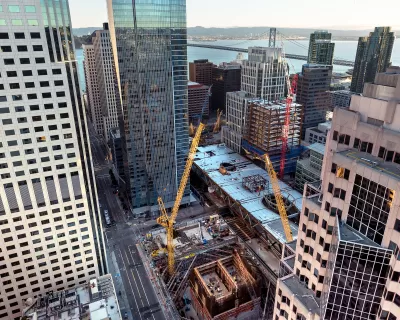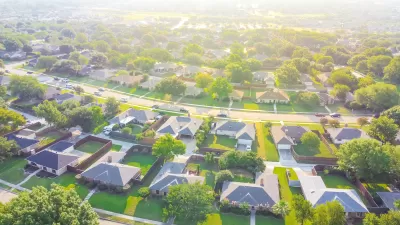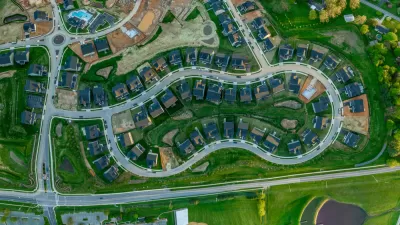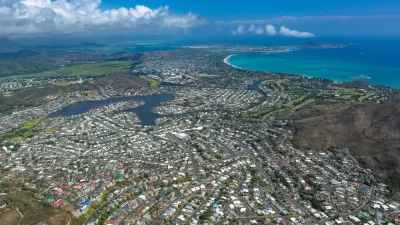Experts blame high land and construction costs and restrictive regulations for San Francisco’s dismal rate of housing construction, which lags behind other fast-growing cities like Austin and Seattle.

San Francisco’s housing crisis is only getting worse. “Exacerbated by the influx of highly compensated tech workers, housing demand has far outstripped supply, prices have skyrocketed and many who work here have been forced to live elsewhere,” writes Adriana Rezal in the San Francisco Chronicle.
Yet the city’s rate of housing construction is far behind that of other growing tech hubs like Austin and Seattle, both of which “approved construction for more than three times as many housing units per person as San Francisco since 2015.”
The article points out that both Seattle and Austin have more space to grow than San Francisco, but San Francisco also has higher construction costs and stricter regulations. “While San Francisco and Austin both had similar population sizes in 2010, with about 800,000 people, Austin permitted over 133,000 units since 2010, while San Francisco permitted only 37,500.” However, “Swift housing production does not guarantee housing costs won’t rise,” as illustrated by Austin’s high housing costs despite its rapid rate of construction.
To alleviate the high costs of housing, experts suggests more public support for missing middle housing, accessory dwelling units, land banking, and other affordable housing solutions. “According to [Joseph Gyourko, a professor of real estate and finance at the Wharton School of the University of Pennsylvania], the key to improving San Francisco’s housing issues is to focus on creating more affordable housing because these units will supply more of the demand than continuing to build units that some residents cannot afford.”
FULL STORY: Here's why Austin and Seattle are building way more housing than San Francisco

Study: Maui’s Plan to Convert Vacation Rentals to Long-Term Housing Could Cause Nearly $1 Billion Economic Loss
The plan would reduce visitor accommodation by 25,% resulting in 1,900 jobs lost.

North Texas Transit Leaders Tout Benefits of TOD for Growing Region
At a summit focused on transit-oriented development, policymakers discussed how North Texas’ expanded light rail system can serve as a tool for economic growth.

Using Old Oil and Gas Wells for Green Energy Storage
Penn State researchers have found that repurposing abandoned oil and gas wells for geothermal-assisted compressed-air energy storage can boost efficiency, reduce environmental risks, and support clean energy and job transitions.

Planting Relief: Tackling Las Vegas Heat One Tree at a Time
Nevada Plants, a Las Vegas-based nonprofit, is combating the city’s extreme urban heat by giving away trees to residents in underserved neighborhoods, promoting shade, sustainability, and community health.

How Madison’s Tree Planting Efforts Are Growing a Healthier Community
Madison’s annual tree planting initiative is enhancing environmental resilience, public health, and community livability by adding 1,400 carefully selected trees citywide, with strong community and institutional support for urban forestry.

Texas State Bills Could Kill Transit Funding in Dallas, Austin
State lawmakers could pull funding from the state’s largest transit agency and the ambitious Project Connect, a voter-approved transit project in Austin.
Urban Design for Planners 1: Software Tools
This six-course series explores essential urban design concepts using open source software and equips planners with the tools they need to participate fully in the urban design process.
Planning for Universal Design
Learn the tools for implementing Universal Design in planning regulations.
Ascent Environmental
Borough of Carlisle
Institute for Housing and Urban Development Studies (IHS)
City of Grandview
Harvard GSD Executive Education
Toledo-Lucas County Plan Commissions
Salt Lake City
NYU Wagner Graduate School of Public Service





























